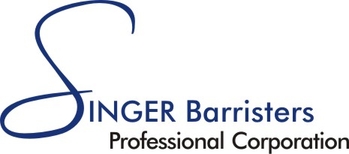In the Feb. 2 issue of Law Times in response to critics of Ryerson University’s Law Practice Program, editor Glenn Kauth suggested giving it more time before rushing to judgment.
He referred to concerns about unpaid internships; the potential to reduce paid articling positions; the high proportion of racialized students more likely to turn to the Law Practice Program; and the issue of student loans. However, both Kauth’s editorial and public pronouncements by those for and against the program fail to mention the most significant element: the quality legal skills training gained by the participants.
Having had the distinct pleasure of being both a firm mentor and an assessor for the recently completed inaugural session of the Law Practice Program, I had a first-hand opportunity to assess it. When one considers that this was a pilot project run independently through Ryerson in the most capable hands of Chris Bentley and Gina Alexandris, anyone involved with the program can conclude nothing other than its success.
As a lawyer old enough to remember my articling period preceding a mandatory four-month bar admission course covering eight distinct subjects and who articled at a time when true mentoring still existed, I am not alone in witnessing a decline in the educational, practical, and professional standards of many newly called lawyers. This is not to suggest the sky is falling but that the Law Society of Upper Canada used to have more stringent quality control over new calls.
This current situation is a failing on the part of the law society in disbanding the old bar admission course. It is also the failing of a legal industry driven by billable hours and greater economic pressures than ever before with the result that it is more likely to view an articling student as a profit centre rather than as a mentor’s contribution to the future of our profession.
To those unfamiliar with the Law Practice Program, it grouped students into virtual firms with each assigned a senior lawyer to act as a mentor who played the role of senior partner. The students worked through a series of real-life experiences ranging from client intake interviews, setting up files, corresponding with opposing counsel, client management, negotiation, preparation of pleadings, and drafting motions. The practical skills training in litigation culminated with cases argued in an actual courtroom at 361 University Ave. The litigation files covered several distinct practice areas. They included family and criminal law, the two areas in our current system that are arguably most in need of fresh, prepared, and competent counsel in order to ensure access to justice.
In addition, there was a solicitor component that dealt with share-purchase agreements and real estate closings along with the attendant file work. This component concluded with the students completing a closing.
The students carried numerous files in different areas of law simultaneously. Built into the program were very real time constraints and law firm demands. With all of the students in the same program, it was easy to assess them comparatively, unlike with articling. It was a rewarding experience to see students in September who were shy and unsure with varied legal and life educational backgrounds develop by December into cohesive teams with similar experiences and feeling confident and certain.
As for those concerned about graduates having to pay back student loans and the lack of paid student-at-law positions, the reality is what it is. Further, high student debt load combined with a dearth of well-paying jobs is certainly not unique to law students. The Law Practice Program’s existence does nothing to exacerbate the situation. In fact, it provides an opportunity for those students who do not obtain articling positions to still meet their intended year of call precisely so they can start to practise and attempt to earn a living. It gives those students a practical experience equal to or better than many well-paid articling positions. Scrapping the program is not the answer, nor is forcing employers to pay a minimum wage over and above the current provincial employment law. This would simply result in many smaller firms and sole practitioners that would otherwise happily participate declining to do so simply because they cannot bear the financial burden.
Moreover, graduation from law school does not and should not entitle one to a particular level of income or even a job. The important aspect is that those who graduate law school should have an equal opportunity to access practical skills training culminating in a call to the bar within a year of their law school graduation. The introduction of the Law Practice Program only enhances this laudable goal.
One could go a step further and advocate that the Law Practice Program should become mandatory in the manner of the old bar admission course. We could then reduce articling to the four-month work placement currently tacked onto the end of the Law Practice Program. If we want to maintain self-governance and public confidence in our profession, we need to ensure more than just a passing standard of uniform skills training. In that regard, the Law Practice Program is a positive step in that direction.
As published in Law Times News
